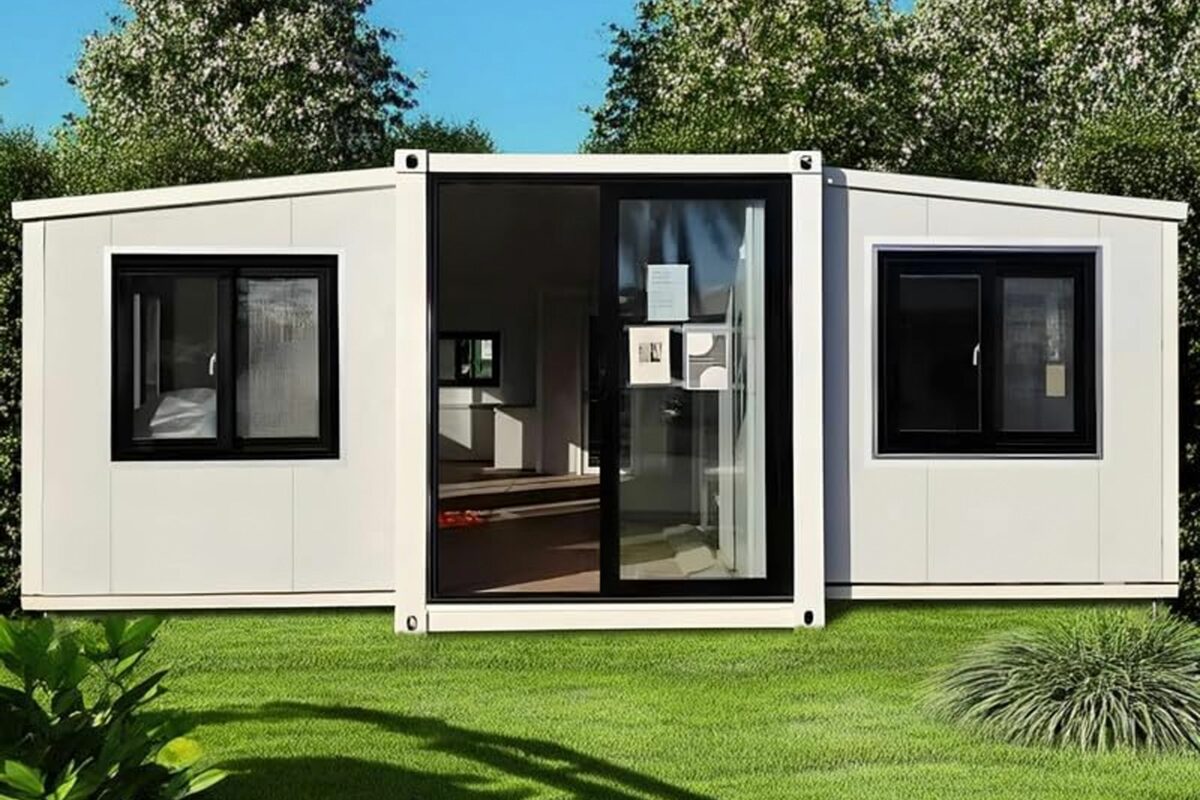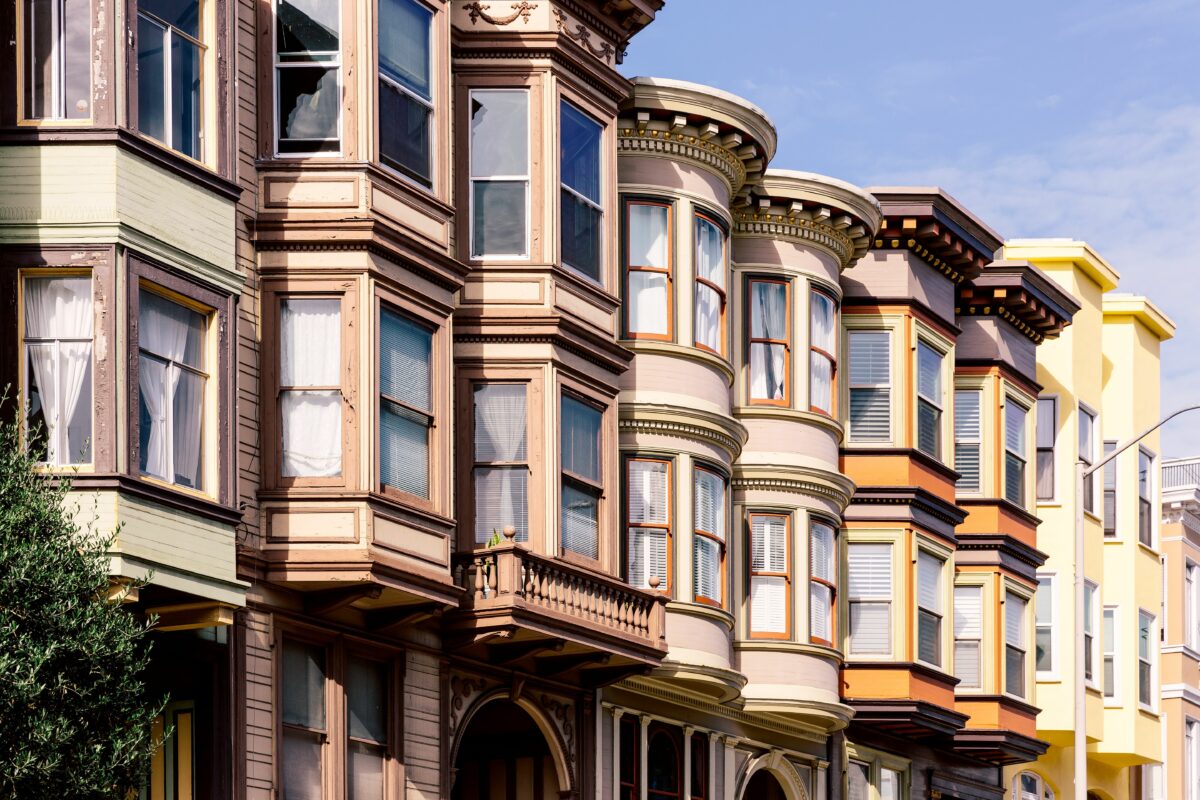Queen Anne is one of the most prolific housing styles of the Victorian era. From the narrow Painted Ladies of San Francisco (as seen in the Full House title sequence) to the sprawling Winchester Mystery House, Queen Anne homes both large and small can be found throughout the United States. Mixing decorative details, colors, and architectural features like bay windows and towers, Queen Anne homes rejected plain, flat surfaces to create a style that is both prevalent and easily identified.
A Brief History of Queen Anne Architecture
Despite what the name might suggest, Queen Anne style neither developed during Queen Anne’s reign in the 1700s, nor was it generally a revival of the style from that time period. Instead, Queen Anne developed in England in the latter half of the 19th century, technically making it a type of Victorian architecture. These homes were made mostly of brick and stone, largely symmetrical, and fairly simple and flat in their shapes.
After crossing the Atlantic Ocean, Queen Anne was no longer the same style. The American interpretation was less subdued and classical in its style, developing more decorative detailing and architectural features. It also morphed into an asymmetrical layout with more shapely features, like turrets and bay windows.
The Watts-Sherman house, built in Newport, Rhode Island by H. H. Richardson, in 1874, is typically considered to be the first American example of the Queen Anne style. It was popular in the United States from about 1880 to 1910, and is considered a subtype of Victorian architecture, alongside Italianate, Gothic Revival, and Second Empire.
Getty Images / ARK NEYMAN
Key Features of a Queen Anne House
According to the book A Field Guide to American Houses by Virginia Savage McAlester (2015 revised edition), there are four different Queen Anne styles in the United States.
The most common style is also the most iconic: the Spindled Queen Anne. McAlester estimates that 50% of all Queen Anne houses in the U.S. are built in this highly detailed style. These homes feature large amounts of spindlework and other wooden ornamentation sometimes referred to as gingerbread detailing.
The second most common style is called free classic. According to McAlester, about 35% of American Queen Annes adhere to this more subdued version that developed later in the style’s popularity. Features include a less decorative exterior, often using classical columns and simple railings for porches instead of spindlework.
Each of the remaining two styles accounts for 5% of American Queen Annes: the timber style (example) has a mix of timber detailing and heavy, turned wood accents that feel similar to Tudor architecture, while the masonry style (example) is largely patterned with brick and stone rather than wood.
Queen Anne homes are typically two or three stories tall, and can be found on large mansions and compact townhouses alike. The features may vary depending on the exact style, but these are some of the most recognizable characteristics of Queen Anne houses.
1. Asymmetrical Design
An asymmetrical design contributes to Queen Anne’s character. Unlike the distinctly balanced symmetry of the Georgian homes popular prior to the Victorian era, Queen Anne houses use signature architectural elements—rounded or octagonal turrets, bay windows, gables, and wrap-around porches—to achieve the uneven facade.
The Queen Anne profile is not entirely angular but often incorporates arches, curves, and rounded elements for contrast. As seen on George Franklin Barber’s Queen Anne homes like The Gables, the uneven roof is typically steep but may also feature decorative shapes around gables or atop features like towers.
2. Assorted Textures and Materials
Texture livens up Queen Anne surfaces. Multiple wood siding patterns, or brick in varied patterns, are often used to give different levels of the home their own distinct style. Specific features such as gables and turrets may also be a location for an alternate, stand-out siding selection. The roof is another surface that commonly incorporates texture.
3. Ornate Exteriors
Ornate exterior details are iconic to Queen Anne homes, such as The Pinc Lady. Porches, windows, gables, and rooflines were highly decorated creating what we often think of as gingerbread trim. Ornamentation went from top to bottom, including roof-top finials and cornice, scrolled brackets, decorative arches, patterned frieze, and delicate balustrades often featuring lace, lattice, beaded spindles, and other elaborate scroll-sawn accents.
4. Varied Colors
Color was commonly used to highlight the varying textures and details on the home’s exterior, emphasizing siding changes, levels of the home, or the intricate details of the spindlework. Palettes often consisted of three or more colors. Unlike the sweet pastel colors seen today, Queen Annes often featured darker, richer hues in contrasting colorings—shades of muddy greens, reds, and browns were popular both inside and out.
5. Embellished Windows
Queen Anne houses typically feature many tall sash windows, often constructed of large panes of glass bordered with smaller glass square accents. Leaded glass and stained glass are also common detailing used to boost interior and exterior style. Some smaller sizes and ornamental shapes may also feature in areas such as gables. Bay windows and oriel windows further add architectural dimension inside and out.
6. Interior Architectural Details
Interior architectural accents mimic the ornate exteriors of Queen Anne houses. Rich woodwork includes molding, paneling, embellishments around windows and doors, decorated ceilings, as well as the iconic spindlework and lattice accenting areas like doorways and staircases. Woodwork also features prominently in built-in furniture like grand fireplace surrounds.
7. Patterns
The interiors of Queen Anne homes aren’t sparse yet they’re not overly decorated. In The Complete Home, published in 1879, author Mrs. Julia McNair Wright advocated for neatness and order, as well as the need to prevent overcrowding when decorating interiors. Patterned wallpaper, artwork, and heavy draperies were cited to give character to the walls. Patterned floors and rugs were common as well. Also indicated by McNair Wright (as well as numerous other home publications from the Victorian era), decorating with books was especially encouraged.





